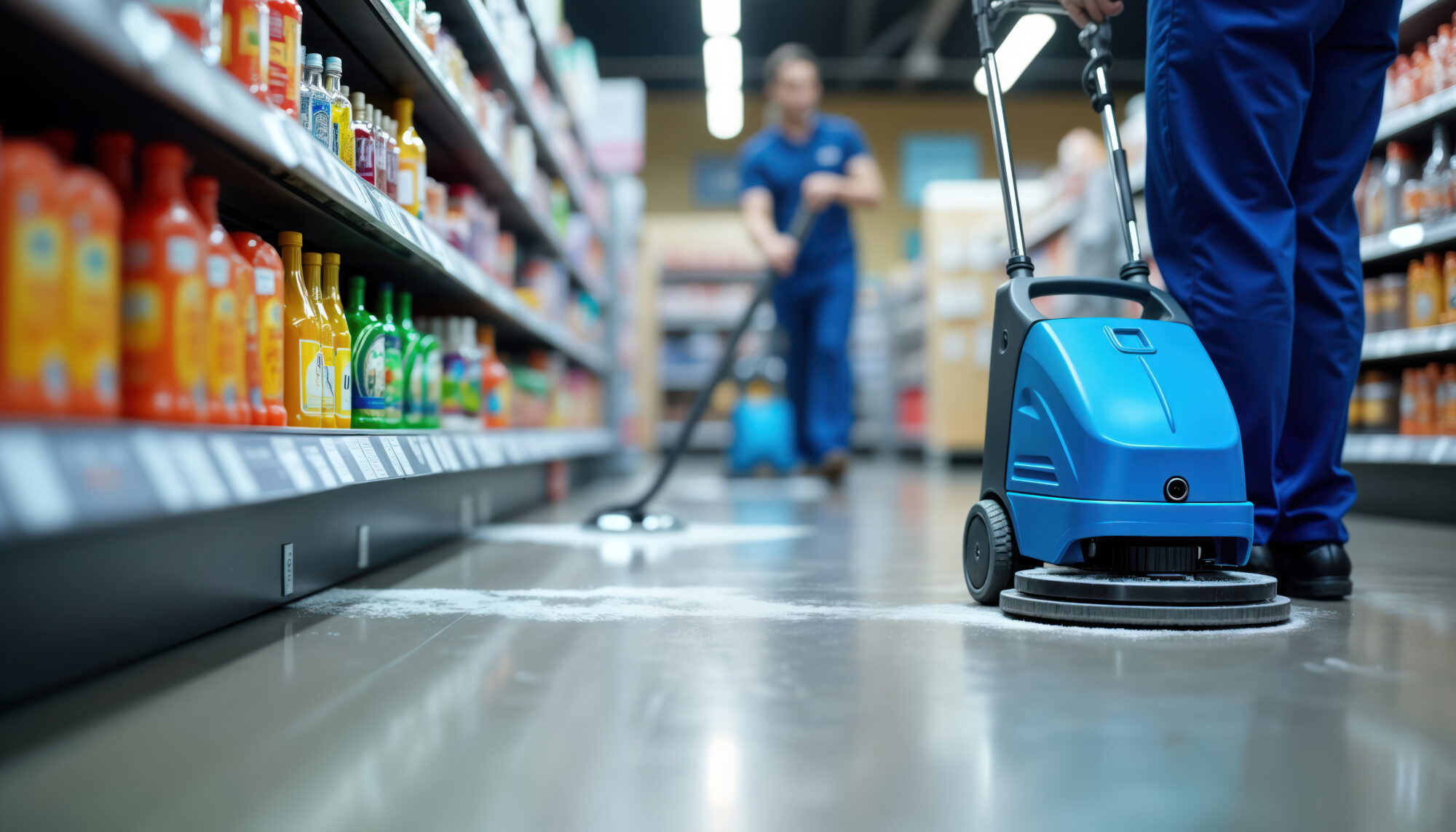School breaks are a great opportunity for retail stores to improve operational results, such as sales, by attracting families and other individuals who may not be able to visit during term time. However, they also create various challenges for retail cleaning partners, from workload and scheduling to shopper retention and brand image.
Why Store Hygiene Matters More During Half-Term
Holidays and half-term breaks can cause footfall to fluctuate. A study conducted by FM Director, showed that retail stores often see a spike in footfall, of just under 10%, towards the end of holidays when school supplies are in demand. With nearly a 10% increase in footfall, it is critical for hygiene levels to be taken seriously by retail stores during these periods.
Half-Term Effects on Hygiene
During half-term, many parents take time off work to spend time with their children, leading to a noticeable increase in families visiting retail stores and shopping centres.
With this rise in footfall, these environments can quickly become breeding grounds for bacteria and present health and safety risks. Clean surfaces, sanitised baskets and trolleys, and well-organised aisles reassure families that the space is safe for their children. When these standards slip, customers are more likely to cut their visits short or choose a competitor that feels cleaner and more welcoming.
Shopper Perception
Store cleanliness is shown to be impactful against shoppers’ loyalty to stores, due to its effects on brand image and values. A study by Talking Retail, found that in 2025, 1 in 10 shoppers are deterred to a different store if the hygiene levels are low. Proving just how important it is to keep level of hygiene high.
A study by the Journal of Retailing and Consumer Services showed that when stores are messy, overcrowded and unhygienic, they have a lower rate of purchase intention in store. Spotless store details, such as floors and checkout counters, subconsciously signal professionalism and attention to detail. This makes customers feel valued and encourages them to browse for longer, often leading to higher purchasing rates.
Common Hygiene Challenges Faced by Stores
Hygiene levels can be challenging in retail environments, due to busy communal areas from increased traffic levels, increased sanitisation requirements and task dedication.
| Challenge | Cleaning Solution |
| Increased Traffic | Implementing a high-frequency cleaning schedule during peak trading hours to ensure quick-response from cleaning teams. |
| High Touchpoints | Identification of high touchpoints, ensuring they are sanitised frequently, without disrupting customer journey. Touchpoints can include such as door handles, waste streams and lift buttons. |
| Task Scheduling | Utilising digital logs such as Pego, to optimise cleaning routines and ensure consistent coverage throughout the day. |
| Product and Consumable Upkeep | Detailed monitoring consumables such as hand soap, hand sanitiser, and paper towels, using automatic alerts or visual checks to prevent shortages. |
By understanding the common challenges and implementing effective cleaning solutions, cleaning specialists can help retailers protect their brand reputation, enhance customer experience, and maintain operational efficiency.
How to Improve Store Hygiene During Peak Periods
There are various ways your cleaning partner can help improve cleanliness rates within your store facilities, such as new waste strategies, innovative technologies and staff training.
Technology and Innovation
With higher levels of children using facilities, such as washrooms, within retail environments during half-term, it is important that the facilities are accessible. Implementing technologies which meet the requirements of children’s height will help boost hygiene levels.
Introducing features like shorter hand soap dispensers, hand dryers and paper towel dispensers will provide children with a higher sense of comfort and allow them to take accountability of their own hygiene practices.
Other innovations that could help foster responsibility for hygiene routines include:
- Clear waste signage
- Touch-free dispensers
- Visible cleaning schedules
- Smart hygiene monitoring systems
Cleaning Agents and Consumables
Whilst footfall is high, it is important that the cleaning agents being utilised are fast drying and eco-friendly. Eco-friendly cleaning agents, such as BioHygiene, are known to be non-damaging compared to other cleaning agents when it comes to potential inhalation and consistent exposure. The fast-drying aspect to cleaning agents is also important to ensure individuals are not exposed to chemical ingredients from left over residue.
Other consumables such as paper hand towels and soap dispensers should be checked frequently throughout the day to ensure there is enough stock for facility users. Technologies like Pego can be used to help manage cleaning operative tasks and track which areas of the department stores need to be cleaned or restocked.
Staff Training
We believe that well-trained staff who are empowered within their roles remain the foundation of any hygiene strategy. Our training focuses on correct product usage, cross-contamination prevention, and problem identification. With the help of MyCompliance, our off and on-site staff are fully equipped with the best-in-class industry knowledge to maintain the highest standards across your site.
Clean stores create loyal, happy shoppers, this is important to keep in mind as half-term seasons can make family spending prove competitive. A well-kept, hygienic environment can help set you apart from the rest. Partnering with the right retail cleaning provider can ensure you store stay well-kept, clean and fresh smelling.
Get In Touch
We have proven experience with small independent stores, large department stores and high-end luxury stores. We can deliver sustainably responsible cleaning services that are effective against the challenges of increased holiday traffic.
Contact our expert team today to begin your journey as DOC’s newest retail partner.
